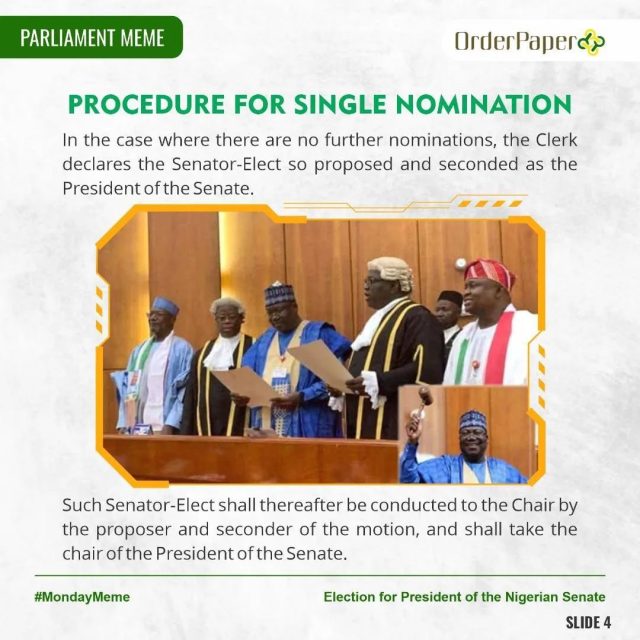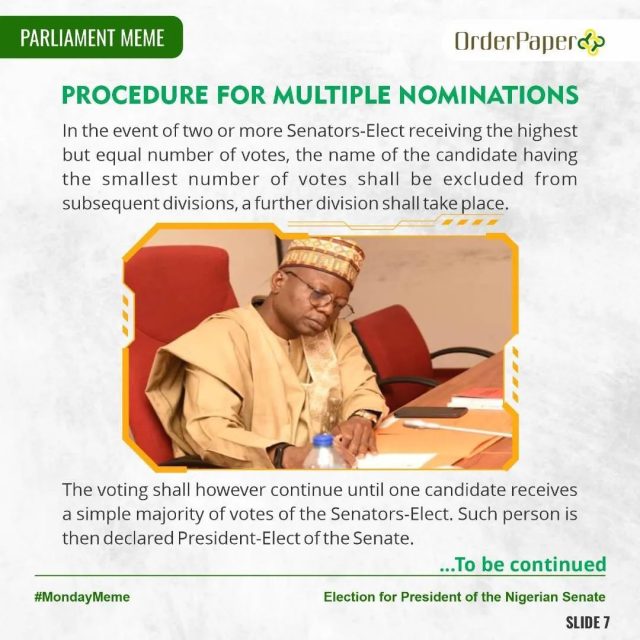As more lawmakers continue to declare interest in occupying the number one seat in both chambers of the National Assembly come June, we present this exposition on the processes leading to the election of a Presiding Officer.
This piece is the first part of the series focused on electing a President of the Senate.
READ ALSO: Parliament Special: Nigeria’s 10th National Assembly and the ghost of 2015

The election of Presiding Officers in the Senate follows established procedures as entrenched in Chapter 5, Section 50 of the Constitution of the Federal Republic (CFRN) 1999 (As Amended) and Section 3 of the Senate Standing Orders 2022.
Importantly, the process leading to the election of a President of the Senate is in three stages – nomination of candidates, voting and oath-taking/swearing-in.

THE RANKING RULE
Senators-elect are entitled to nominate their fellow Senators-elect for the position of the President of the Senate but in accordance with the Ranking of Senators, which is:
- Senators returning based on the number of times re-elected.
- Senators who had been members of the House of Representatives.
- Senators elected as Senators for the first time.

NOMINATION
A Senator-Elect addressing the Clerk on the Inauguration Day of the new Assembly proposes another Senator-Elect to the Senate to be President of the Senate and moves that he/she “Do take the Chair of the Senate as President of the Senate.
The nominated Senator-Elect must also inform the Senate if he/she accepts the nomination and proceeds to address the Chamber after another Senator-Elect must have seconded the nomination.

READ ALSO: Parliament Meme: Committee Membership in the Senate
PROCEDURE FOR SINGLE NOMINATION
In the case where there are no further nominations, the Clerk declares the Senator-Elect so proposed and seconded as the President of the Senate. Such Senator-Elect shall thereafter be conducted to the Chair by the proposer and seconder of the motion, and shall take the chair of the President of the Senate.

PROCEDURE FOR DUAL NOMINATIONS
Where there is more than one Senator-Elect proposed as President of the Senate, the Clerk shall declare the nominations closed. With the nomination of two or more Senators-Elect to take the Chair of the Senate as President of the Senate, an election will thereafter be conducted.

READ ALSO: Parliament Assembly Meme: Duties of the Clerk of the Senate
PROCEDURE FOR MULTIPLE NOMINATIONS
Where are more than two Senators-Elect are nominated and seconded to take the Chair of the Senate as President of the Senate, a ‘division’ shall be conducted. The Senator-Elect who receives the highest number of votes shall be declared the President of the Senate.
In the event of two or more Senators-Elect receiving the highest but equal number of votes, the name of the candidate having the smallest number of votes shall be excluded from subsequent divisions; a further division shall take place.
The voting shall, however, continue until one candidate receives a simple majority of votes of the Senators-Elect. Such person is then declared President-Elect of the Senate.
…to be continued.




